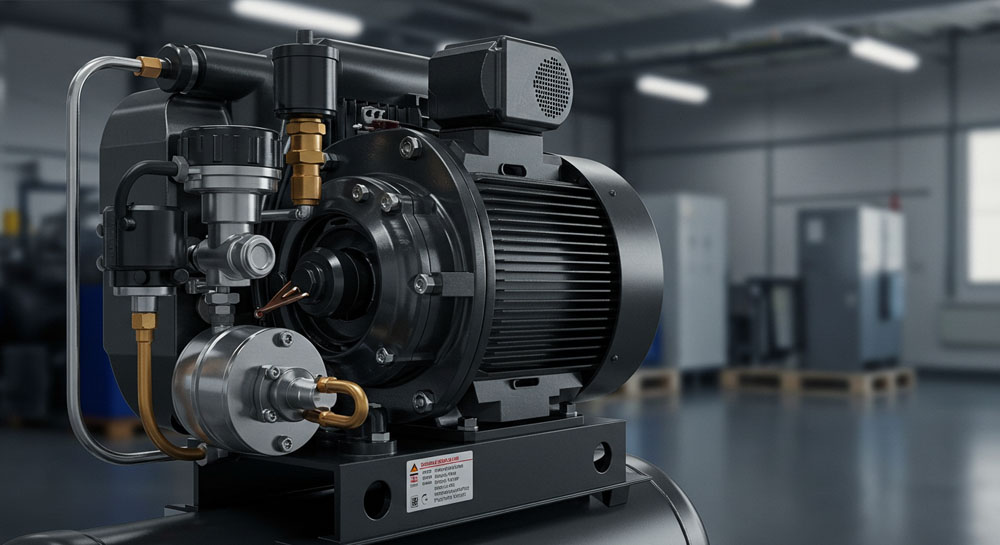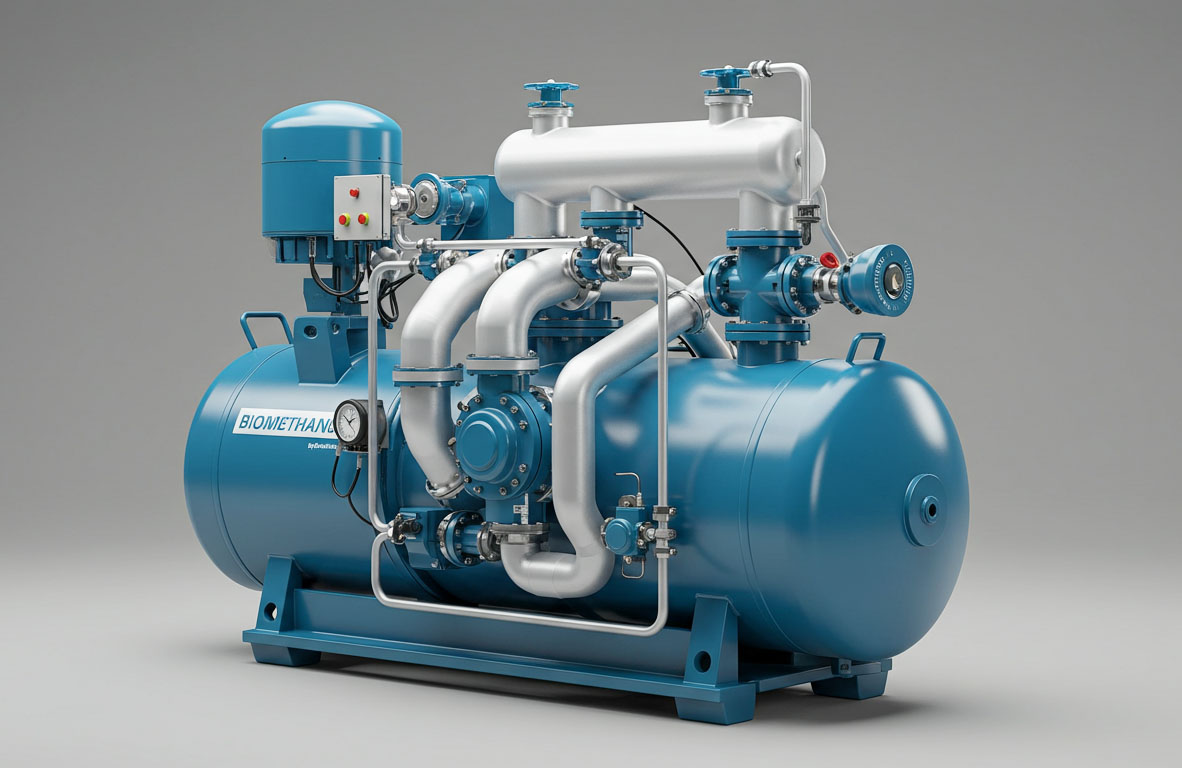High Pressure Compressors: Powering Demanding Applications with Precision
In today’s industrial landscape, where performance, efficiency, and reliability are paramount, high pressure compressors have become indispensable. From aerospace testing and gas storage to PET bottle manufacturing and scuba diving, these powerful machines are designed to compress air or gas to pressures far beyond standard industrial levels—often exceeding 1,000 psi (70 bar) and reaching up to 6,000 psi (400 bar) or more.
This article explores how high pressure compressors work, where they’re used, and what to consider when selecting one for your operation.

What is a High Pressure Compressor?
A high pressure compressor is a mechanical device that compresses gases to a significantly higher pressure than typical industrial compressors. While a standard compressor may operate up to 125–150 psi, a high pressure compressor handles specialized tasks that demand pressures ranging from 1,000 to 6,000+ psi.
These compressors are typically multistage machines, where air or gas is progressively compressed through two or more stages, cooled between stages to manage heat buildup, and finally discharged at the desired high pressure.
Core Components and Operation
High pressure compressors, regardless of type, follow a basic principle: reducing the volume of a gas increases its pressure. They often include:
- Multistage Pistons or Rotors: To compress gas in stages, improving efficiency and reducing wear.
- Intercoolers: Between each compression stage to reduce heat and increase safety.
- Aftercoolers: To cool gas before discharge and remove moisture.
- Safety Valves: To protect the system from overpressure.
- Filtration and Separation Units: Especially critical in gas applications to remove oil, water, or particulate contaminants.
Some designs include oil-free operation, especially in industries where gas purity is non-negotiable.
Types of High Pressure Compressors
There are several configurations of high pressure compressors, depending on the application:
- Reciprocating (Piston) Compressors
Ideal for intermittent, high-pressure use. These are cost-effective and can reach very high pressures, making them popular for gas filling, diving, or testing systems. - Diaphragm Compressors
Used in ultra-clean or hazardous gas compression. These isolate the gas from moving parts using a diaphragm, ensuring zero contamination. - Screw Compressors (Two-Stage)
Less common at ultra-high pressures but used where continuous duty and oil-free air are needed at moderate high pressures. - Booster Compressors
These take already-compressed air or gas and further boost the pressure. Often paired with other systems to meet specialized pressure demands.
Common Applications of High Pressure Compressors
High pressure compressors are used across a wide range of industries and specialized use cases:
1. PET Bottle Blowing
Beverage manufacturers use high pressure air (30–40 bar or higher) to shape plastic preforms into bottles. A reliable high pressure compressor is essential to maintain speed and consistency in production.
2. Scuba Diving and Breathing Air
Scuba tanks are filled with compressed breathing air typically at 200–300 bar. Compressors for this purpose must meet strict filtration and quality standards (e.g., ISO 8573-1 Class 1).
3. Industrial Gas Supply
High pressure compressors are used to compress gases like nitrogen, hydrogen, helium, and natural gas for storage or transport. Applications include:
- CNG vehicle refueling stations
- Hydrogen fueling systems
- Gas cylinder filling stations
4. Defense and Aerospace
Used in wind tunnels, missile launching systems, and aircraft system testing where extremely high pressure air or inert gas is required.
5. Energy and Oil & Gas
Compressors are used to inject gas into reservoirs for pressure maintenance, drive turbines, or perform pipeline testing (hydrostatic and pneumatic).
6. Firefighting and Rescue
Self-contained breathing apparatus (SCBA) used by firefighters rely on high pressure air tanks filled by specialized compressors.
Advantages of High Pressure Compressors
- Compact Power
These machines can deliver extreme pressure levels in a relatively small footprint, making them ideal for high-demand but space-limited operations. - Precision Control
Advanced models offer fine-tuned pressure control, variable speed drives, and integration with control systems for remote operation and diagnostics. - High Efficiency
Multistage compression, intercooling, and energy recovery systems help optimize energy usage, especially important given the higher operating demands. - Durability
Built for rugged environments, many units are capable of 24/7 operation with minimal downtime—critical in industries like power generation and oil & gas.
Key Considerations When Choosing a High Pressure Compressor
1. Pressure and Flow Requirements
Define the exact pressure (bar or psi) and flow rate (cfm or m³/h) your application demands. Oversizing leads to wasted energy; undersizing leads to performance issues.
2. Gas Type and Purity
Certain gases (e.g., oxygen, hydrogen) are highly reactive or flammable, requiring oil-free or explosion-proof designs. For breathing air, filtration is paramount.
3. Cooling Method
Choose between air-cooled and water-cooled systems. Water cooling is more efficient for continuous high-load applications but requires infrastructure.
4. Power Source
High pressure compressors can be electric, diesel, or gas engine-driven. Diesel is often used in mobile or off-grid situations, while electric is standard for stationary industrial use.
5. Safety Features
Safety valves, emergency shutoffs, temperature sensors, and overpressure protection are non-negotiable in high pressure systems.
6. Maintenance and Support
Look for systems with easy access for maintenance, reliable spare parts supply, and solid manufacturer support. Predictive maintenance tools are a plus.
Maintenance Best Practices
To ensure long life and safe operation:
- Regularly check for leaks, especially at high-pressure connections.
- Monitor temperature and vibration for early signs of failure.
- Replace filters and check oil levels (if lubricated).
- Follow the manufacturer’s service intervals for valves, seals, and pistons.
- Calibrate safety systems regularly.
Downtime in high pressure operations can be costly—or dangerous—so preventive maintenance is critical.
Innovations in High Pressure Technology
- Oil-free diaphragm compressors are becoming more compact and efficient, especially for gas chromatography and laboratory applications.
- IoT and remote monitoring allow predictive maintenance, system alerts, and operational insights via cloud-based dashboards.
- Hybrid compression systems combine traditional piston stages with advanced boosters or recovery modules for energy efficiency.
As industries demand cleaner energy and better performance, expect to see increased use of high pressure compressors in hydrogen infrastructure, carbon capture systems, and space technologies.
Conclusion
High pressure compressors are the backbone of countless industrial systems that demand more than ordinary air power. Their ability to handle extreme conditions—whether it’s gas transfer, bottle molding, or breathing air delivery—makes them a vital part of modern engineering and manufacturing.


